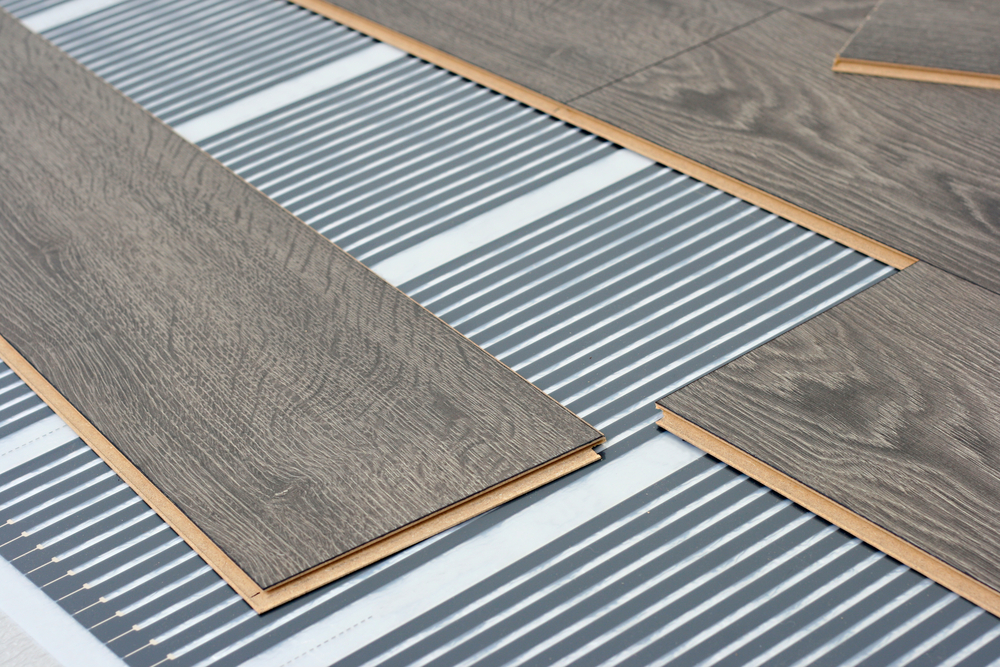As Australians continue to be more conscious of their impact on the environment, choosing energy-efficient solutions is becoming a high priority for many homeowners.
This is just one of the reasons why hydronic heating solutions have increased in popularity in recent years. They provide numerous benefits to the home and commercial buildings, with the most notable being their superior energy efficiency.
Hydronic heating systems can be installed in various ways, from panel heating to underfloor systems. One of the most efficient methods for installing hydronic heating is underfloor gas slab heating.
Hydronic Slab heating
A discreet and efficient form of heating, slab floor heating is a standard method for hydronic underfloor heating.
Gas-powered in-slab heating is regarded by many in the hydronic heating industry as one of the most luxurious and comfortable heating systems on the market.
As heat rises, underfloor heating makes the most sense for economically keeping the home warm in winter. It keeps the heat where you are rather than above your head. This system also ensures less heat is lost through windows and doors as with conventional air-forced heating solutions.

How does it work?
Underfloor slab heating provides a slow release of radiant heat through the flooring. This enables more uniform temperature to be maintained throughout the home.
Installation of slab heating involves pipes secured to metal reinforcement in a spiral or serpentine layout. Concrete is poured over this piping, creating a structural slab to build on.
Once connected, heated water flows from the boiler through the piping, transferring heat into the concrete. This efficiently heats the flooring of your home or commercial building.
Due to the piping being laid under concrete, in-slab heating is a good option for new homes, as existing homes will require significant work to get flooring replaced.
Another method of underfloor slab heating is in-screed. Like in-slab, in-screed hydronic heating warms the whole floor with a radiant heater.
The piping of in-screed heating is laid directly onto a pre-poured structural slab, with a thick concrete screed then placed over top.
This method is suitable for both new and existing homes and is an efficient and responsive way of installing hydronic heating.
Benefits
Hydronic slab heating offers numerous benefits, making it an increasingly popular option within Australian homes.
While hydronic slab heating systems may have a higher upfront cost, they operate more efficiently than conventional heating systems, providing long-term savings, making them a solid investment. Underfloor heating is a more efficient option for large spaces, making it ideal for commercial buildings.
By using the thermal mass of the concrete slab, the system provides optimum thermal comfort at much lower temperatures, reducing overuse and minimizing waste.

Incorporating underfloor heating with a high-efficiency condensing boiler can reduce running costs further and provide a significant saving on energy bills. Installation of underfloor heating systems can also increase the value of your home, potentially providing you with further financial benefits.
Underfloor heating also radiates heat more evenly, with the system turning the flooring throughout the home into a radiant heater. This makes the system much more comfortable, as no hot air is blown around and you will not experience cold spots in the home.
The lack of hot air being dispersed also means dust and allergens are not moving throughout the home. This results in a cleaner home environment, which can be especially beneficial for those who suffer from allergies.
Unlike some air-forced systems, underfloor heating produces no sound, resulting in minimal noise disruption.
As the required temperature for underfloor heating is quite low, hydronic slab heating solutions are ideal for integrating with solar energy systems. This makes it a more environmentally friendly option.
Gas slab heating provides continuous comfort at minimum cost and maximum efficiency. The system has low running costs and a long lifespan, saving you money in the long term.
Hydronic slab heating solutions
The many benefits of hydronic slab heating cannot be denied, making it a great investment for your home or commercial building.
For more information on installing gas-powered in-slab heating, talk to experts in hydronic heating solutions to ensure you get the right system for your home.






